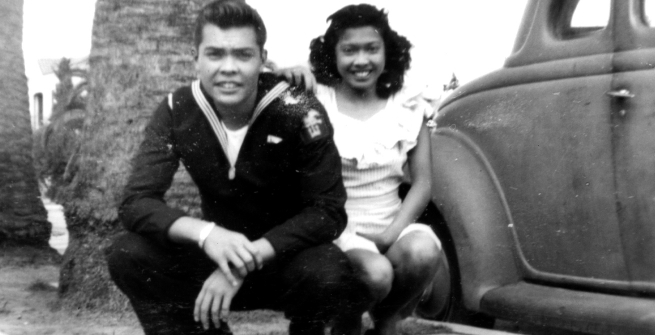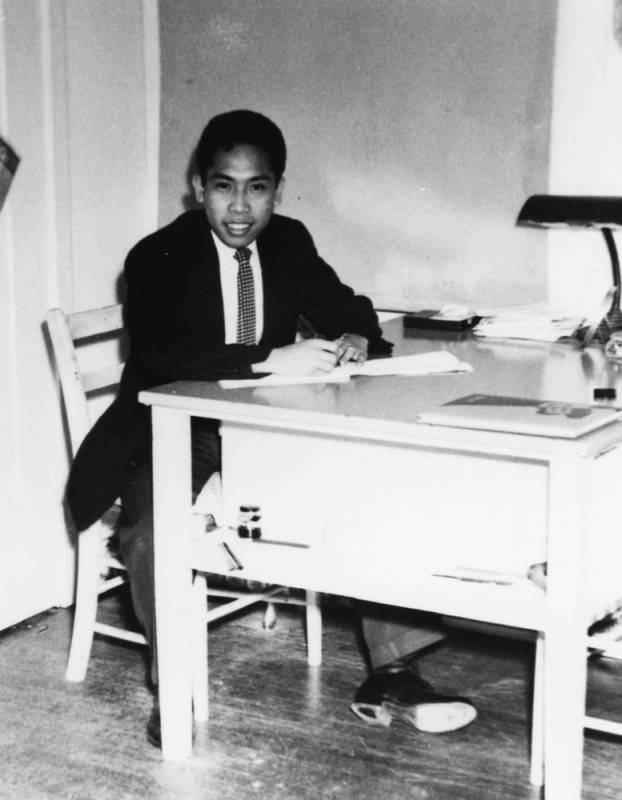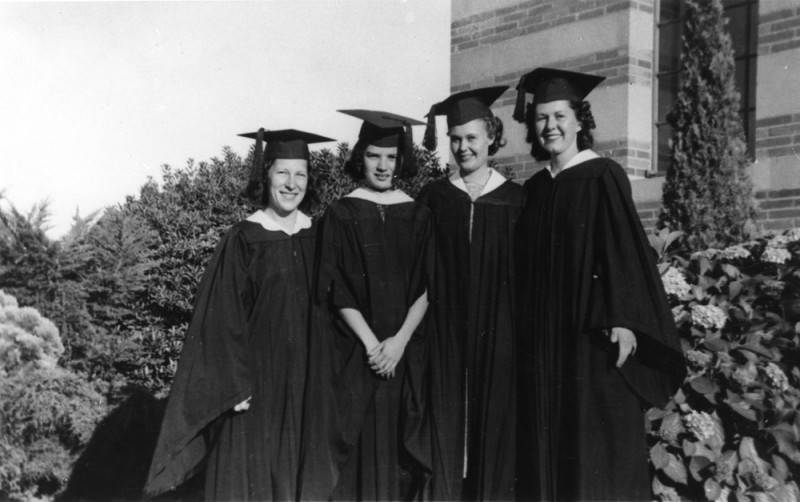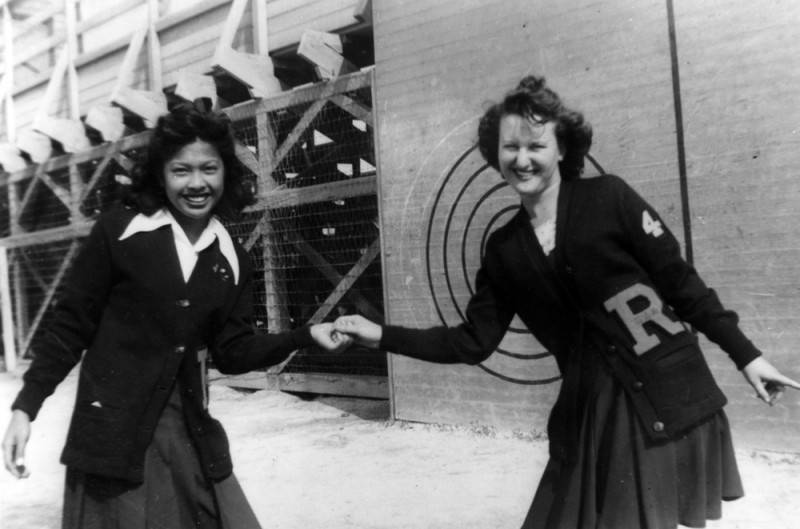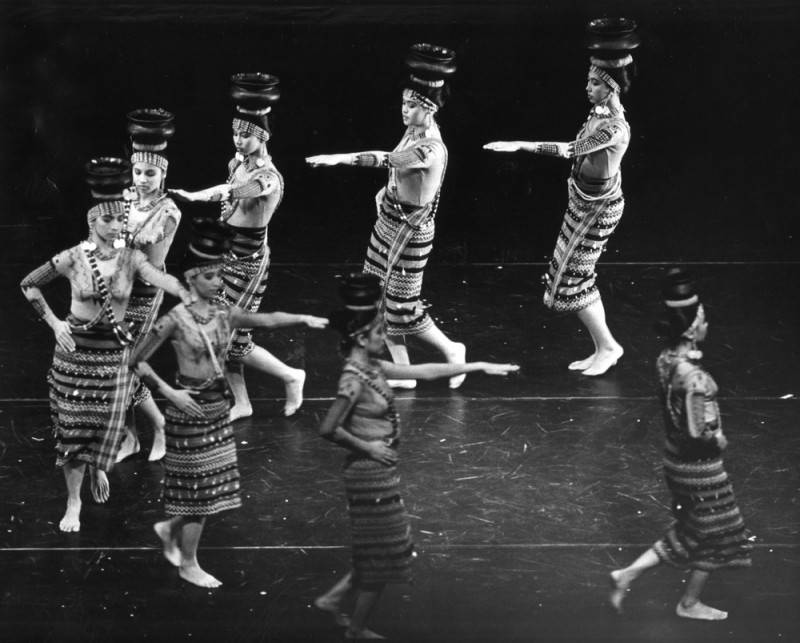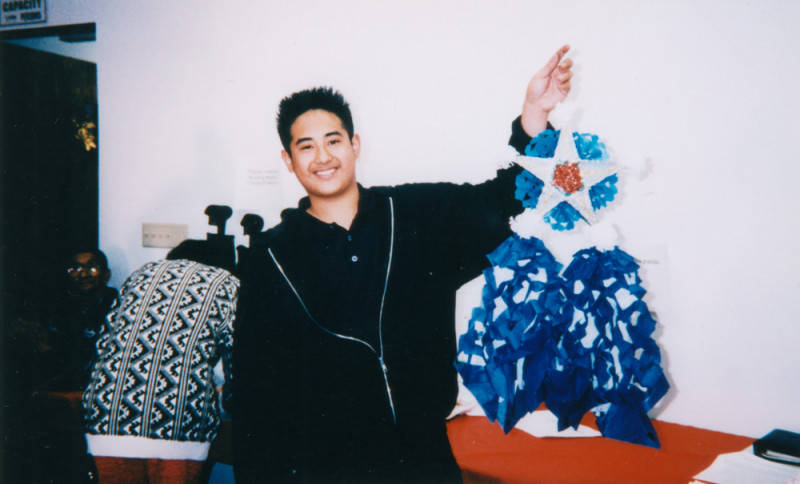Thirty years ago the Los Angeles Public Library embarked on a ground-breaking, collection-building project—reaching out to the diverse communities of the region for family photographs that would provide depth and nuance to an understanding of this region’s multi-cultural history. The project and its results are called Shades of L.A. The support group Photo Friends of the L.A. Public Library was formed to assist in that effort. The group endures.
Los Angeles is a place literally built on the intersection of cultures: from the Tongva and other Native tribes that lived here for centuries to the Spanish, Mexican, and Black pobladores who established the pueblo in 1781, to the Hispanic and White cultures that duked it out for dominance in the early 19th century. As so often happens, the dominant culture, in this case the White American settlers, was quickly able to put their stamp on the historical narrative.
In the 20th century, Los Angeles has seen further waves of immigration, from Eastern Europe, the Middle East, East Africa, and Latin America. Asian immigration has come in distinctive waves, beginning with Chinese in the late 19th century, to Japanese and Filipinos in the first part of the 20th, and, more recently, Southeast Asians, the refugees of the wars that decimated that region.
With major funding from Security Pacific National Bank and California Humanities, LAPL staff and volunteers were able to reach out to many ethnic communities and collect or copy over 7,000 images documenting family businesses, celebrations, religious and cultural traditions, and ordinary life. In addition, volunteers taped a dozen oral histories from participants. These photos and stories go far to balance the collection of the library.
Filipinos in Los Angeles
Two persons who immigrated to this country from the Philippine Islands provided oral histories for Shades of L.A.: Royal Morales and Helen Brown. This essay is based in part on their stories. All photos are from the Shades of L.A.: Filipino American Community Collection unless otherwise indicated.
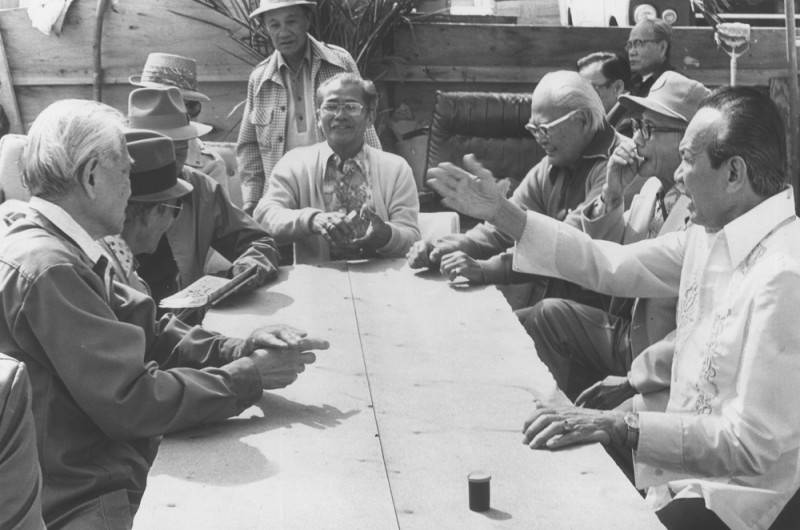
The Philippines has a long, complicated history, including a unique melding of cultures and ethnicities and a special, if not always happy, relationship with the United States. For centuries the islands were subjects of the Spanish Empire. In 1898 the country was freed from Spanish rule only to become a far-flung territory of the U.S. Independence finally arrived only 75 years ago.
A benefit of American governance was that Filipinos could immigrate to the states more easily than other Asian peoples (at least until 1934 when immigration quotas were established). They were called “Nationals.” This was not the same as being a citizen; Nationals could not vote and faced similar discrimination as members of other ethnic groups.
In his 1993 interview, Royal “Roy” Morales described a center of Filipino activity in Central Los Angeles that moved about according to the changing demographics of the times, as well as urban development in the Bunker Hill area and freeway development. At the time of the interview, he describes the new Filipino Town as “the Union and Temple area to further down to Alvarado and west.” The area includes both the Filipino Christian Church and the Filipino Community Center (now the Filipino Cultural Center).
Roy was born in Los Angeles in 1932 but moved to the Philippines with his family at the age of two. He returned to the states at the age of 18, alone, and enrolled in college. He earned a master’s degree in social work from USC and went on to a long career in the field, using his talents to help young Filipinos. He sat for an interview with Amy Kitchener in 1993.
Arriving back in the Los Angeles area at the age of 18 was a bewildering experience for Roy:
"I saw the big trees the big ocean. I saw the mountains and snow, very impressive, very clear, beautiful country. Seeing this vast, big country was very impressive. And then going directly to the campus, of course, that was my acculturation, the campus, the school. And right away the other connection was going to the Filipino Christian Church. That became my anchor."
Helen Brown was born in Manila in 1915 to a Filipino mother and Caucasian American father, one of many mainlanders who went to the Philippines to teach in the early part of the century. Her family immigrated to the Los Angeles area in 1933 when she was a teenager. She graduated from UCLA and went on to receive a master’s in education from the university in 1939. Most of her working life was in schools, both in teaching roles and as an advocate for child welfare.
Although she counted white girls among her friends growing up, she often felt she was treated as a curiosity:
"We’d have parties and sometimes we’d have slumber parties, and I remember we would be talking, sharing experiences. And, well, you know: “Where were you born?” I’d say I was from the Philippines and, well, that would start the frowns, you know. “Where was that?… Was it near Hawaii?” “No, a little bit further than that.” [Sometimes] I’d say I was from Hawaii, you know, or Czechoslovakia, or whatever."
Forbidden to Marry
Shortly after graduate school, Helen met Bill Brown, a Caucasian. Although she herself was half Caucasian, the couple were turned away when they went to get a marriage license in 1941. California still had a miscegenation law on the books, dating from statehood in 1850, which outlawed marriage between Caucasians and members of any other race. (Hispanics were considered white in this context.) The couple went to Nevada to marry. It was common at the time for mixed-race couples to marry out of state. Seven years later, the statute was struck down in the state Supreme Court case, Perez v. Sharp.
Wartime Opportunities
World War II brought opportunities for ethnic minorities and women, groups that often faced discrimination in employment. Helen Brown trained as a welder and found work with CalShip (the California Shipbuilding Corporation) working on the Liberty Ships. CalShip and other yards had a mandate to turn out hundreds of new cargo ships to support, and sometimes carry, armed forces. Much of the work crew were women.
The work was also an opportunity for Helen, and others, to mix with women of other ethnicities:
"I had gotten acquainted with the others—the Blacks and the Hispanics—and so I went to work with many of them in the shipyard. And I was assigned to weld the sides of the ships—they were called the bulkheads of the ships, these Liberty Ships—later called the Victory Ships... I was so interested because some of them were used to land the troops or the marines in the Philippines, as well as other islands."
There were all kinds of women, there was even one flapper kind of young thing, you know; she’d make us all laugh with all of her adventures, you know! And then also, I know that was the beginning of women’s empowerment, because it was the first time that women of color really had the chance to earn a good living, because the pay was very good. And enjoy themselves, and they learned this skill. First time they were out of their homes, you know.
Cultural Identity
The sixties was a turbulent decade in America, as many racial and ethnic groups organized to demand recognition and an end to discrimination in housing, jobs, and education. These movements also served to foster pride in ethnic identity and culture. Filipinos who may have come from quite diverse backgrounds in their home islands now began to see themselves as one group: Filipino Americans. Both Helen Brown and Roy Morales, who became friends and allies, were involved in establishing Filipino American associations.
Helen, who had been quiet and shy in her youth, recalls finding her voice and purpose:
"We as a group were hearing the Blacks talk about their experiences. We Asians began to hear about the Chicanos and were saying to ourselves, “Hey, you know, we feel the same way. They’re saying things that we feel that we have never expressed.”"
The terms “Pilipino/Pilipina” were adopted by many activists as a way of establishing self-identity, rather than the “Filipino/Filipina” ascribed to them originally by Spanish conquerors. Helen explains:
"And then they gave us our name: Filipinos with an F. And we didn’t even have an F in our alphabet, see? And they’re defining who we are and everything."
Today both terms are used.
Cultural pride was a big part of changing times. Helen Brown felt unexpected pride when she first saw a dance troupe from the Philippines perform in Los Angeles:
"I saw this for the first time at the Shrine Auditorium in 1954 when a dance troupe called the Bayanihan came to perform. So I went over to see it and I’m telling you, Amy, this was the most beautiful presentation that I’ve ever seen, you know. And it was all this Philippine music with all the dances and costumes and everything. It was just beautiful! And I said, “Hey, you know what, that’s part of me!” And that was really the beginning of my pride in being, you know, who I was."
Royal Morales described some of the cultural traditions that received new recognition during the sixties and seventies as young Filipinos discovered their heritage:
"Well, the ethnic studies and then empowerment, getting into certain positions of importance, getting further into the roots, heritage, a lot of the games, culture, kite-making, sipa [rattan ball and the game that utilizes it], parol making [a decorative Christmas lantern], poetry that is a combination of Pilipino and English. And artists, writers were coming up. A few books were beginning to be written… Drama, poetry, essays, articles, arts and crafts were all part of the seeking of roots."
Acculturation, not Assimilation*
Helen Brown described the change in mindset that came about as a result of the ferment of the sixties and beyond:
"So now, what they’re doing is to begin to think in terms of—yes, we are from different regions of the islands, but still we’re from the Philippines. And so, if we’re going to have more of a part of this country here in the United States that we’re making our home, we want to be a part of this, you know; we have to make our part known, too. It’s not assimilation, it’s more of an acculturation. So we keep our differences as Filipino, but we also become a part of the United States. This is the Philippine culture contributing to this society."
*Merriam-Webster defines acculturation as a blending of cultures, as opposed to assimilation which occurs when one culture is absorbed into that of the dominant culture.
Written by Eleanor Boba. Originally published on the Photo Friends blog on April 14, 2021.
